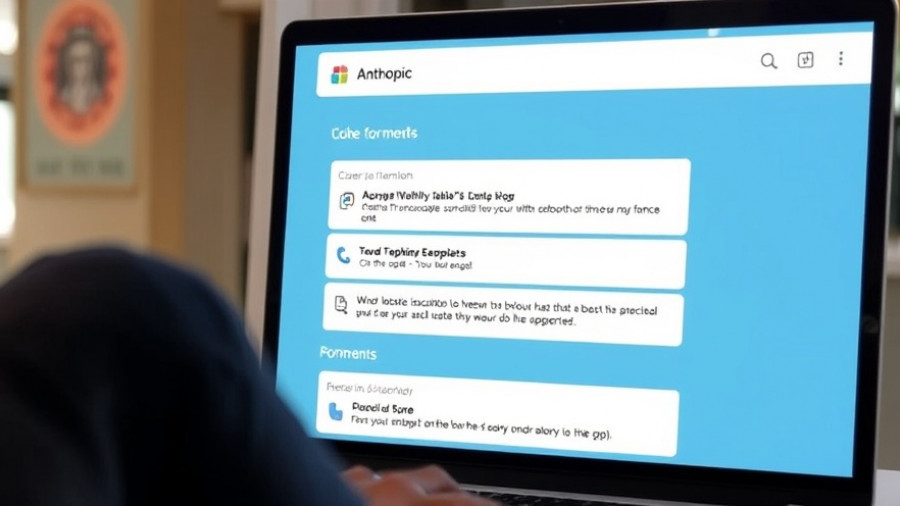
The Revolution of Coding AI: Claude Sonnet 4.5
Anthropic's recent release of Claude Sonnet 4.5 marks a significant milestone in artificial intelligence, particularly within the area of coding assistance. Having demonstrated substantial performance improvements, this model showcases its ability to handle extensive coding projects autonomously for over 30 hours, making it a game changer for developers across various fields.
Key Features That Set Sonnet 4.5 Apart
The evolution from Claude Sonnet 4 to Sonnet 4.5 reflects not just increases in efficiency but also critical advancements in functionality. On the SWE-bench Verified benchmark, the latest model achieved an impressive 77.2% score, surpassing its predecessor's 72.7%. Additionally, it scored significantly higher on the OSWorld benchmark with 61.4% — improving from 42.2% in just four months. Such metrics illustrate real-world improvements in coding capabilities, translating into outputs that effectively solve complex software challenges.
Security Enhancements and Safety Mechanisms
One of the most discussed aspects of Claude Sonnet 4.5 is its improved safety features, which have been fortified under Anthropic's ASL-3 criteria. The model incorporates sophisticated automated classifiers for detecting and preventing potentially hazardous instructions, including risks associated with CBRN (chemical, biological, radiological, and nuclear) threats. The success of these safety enhancements is highlighted by a decrease in false positives by tenfold, emphasizing the commitment to creating a safe AI environment for users.
Practical Applications Across Industries
Sonnet 4.5 is not merely a technological marvel; it offers tangible business value across various sectors. For instance, in the finance industry, it manages everything from basic analyses to more intricate predictive tasks, thus transitioning manual auditing into intelligent risk management. In cybersecurity, its capabilities could allow for proactive vulnerability patching — a leap forward from reactive measures. Each improvement seeks to elevate the standard workflows within organizations, ultimately driving enhanced project outcomes.
Comparing Claude Sonnet 4.5 to Competitors
In the race of coding AI, comparisons with counterparts such as OpenAI's Codex or Microsoft's Copilot are inevitable. While both alternatives have their strengths in specific areas, the comprehensive improvements made by Claude Sonnet 4.5 in multi-step reasoning and long-duration task execution give it a competitive edge in complex project environments. Developers are likely to benefit from Sonnet 4.5's tendency for generating production-ready insights and documents more reliably.
Future Predictions: The Path Ahead for AI in Coding
As the tech landscape evolves and competition in AI intensifies, expectations are shifting. Models like Claude Sonnet 4.5 not only demonstrate enhanced programming skills but also showcase the ability to learn and adapt within their designated environments meaningfully. Looking ahead, the demand for real-time coding assistance will only grow, potentially transforming how developers approach their tasks on a day-to-day basis and ensuring that AI tools become indispensable resources.
In summary, with its blend of advanced coding capabilities, safety features, and practical applications across diverse sectors, Claude Sonnet 4.5 is set to redefine expectations for AI-driven development. For those interested in leveraging cutting-edge technologies to improve their coding processes, exploring the features of this groundbreaking model is highly recommended.
For continuous updates on technological advancements in AI and their implications for industries worldwide, consider subscribing to leading tech newsletters or following dedicated platforms that offer in-depth analyses and insights.
 Add Row
Add Row  Add
Add 




Write A Comment